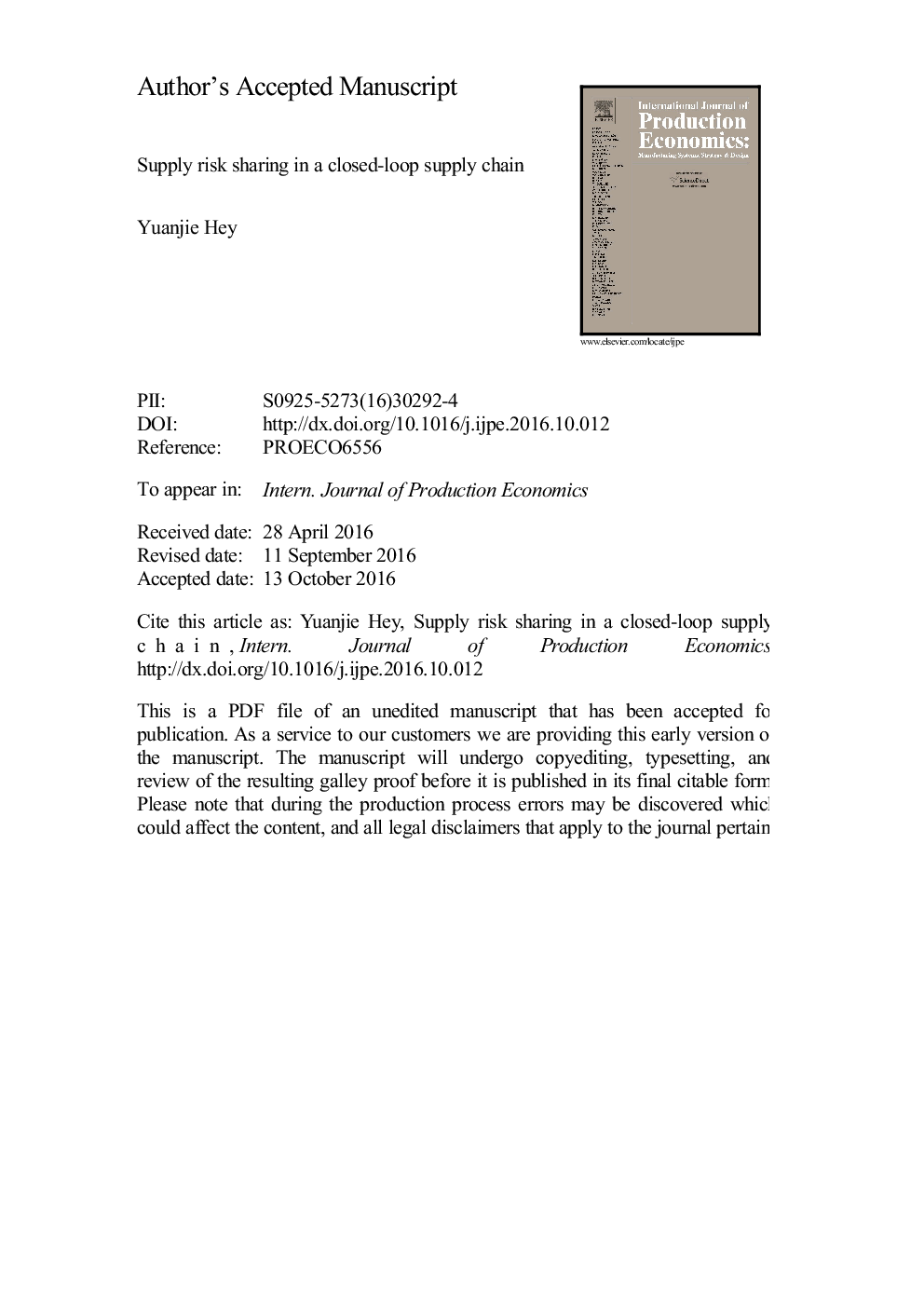ترجمه فارسی عنوان مقاله
به اشتراک گذاشتن خطر در زنجیره تامین حلقه بسته
عنوان انگلیسی
Supply risk sharing in a closed-loop supply chain
| کد مقاله | سال انتشار | تعداد صفحات مقاله انگلیسی |
|---|---|---|
| 98297 | 2017 | 47 صفحه PDF |
منبع

Publisher : Elsevier - Science Direct (الزویر - ساینس دایرکت)
Journal : International Journal of Production Economics, Volume 183, Part A, January 2017, Pages 39-52
ترجمه کلمات کلیدی
زنجیره تامین حلقه بسته، قرارداد به اشتراک گذاشتن ریسک عرضه، مدیریت اکتساب،
کلمات کلیدی انگلیسی
Closed-loop supply chain; Supply risk sharing contracts; Acquisition management;

